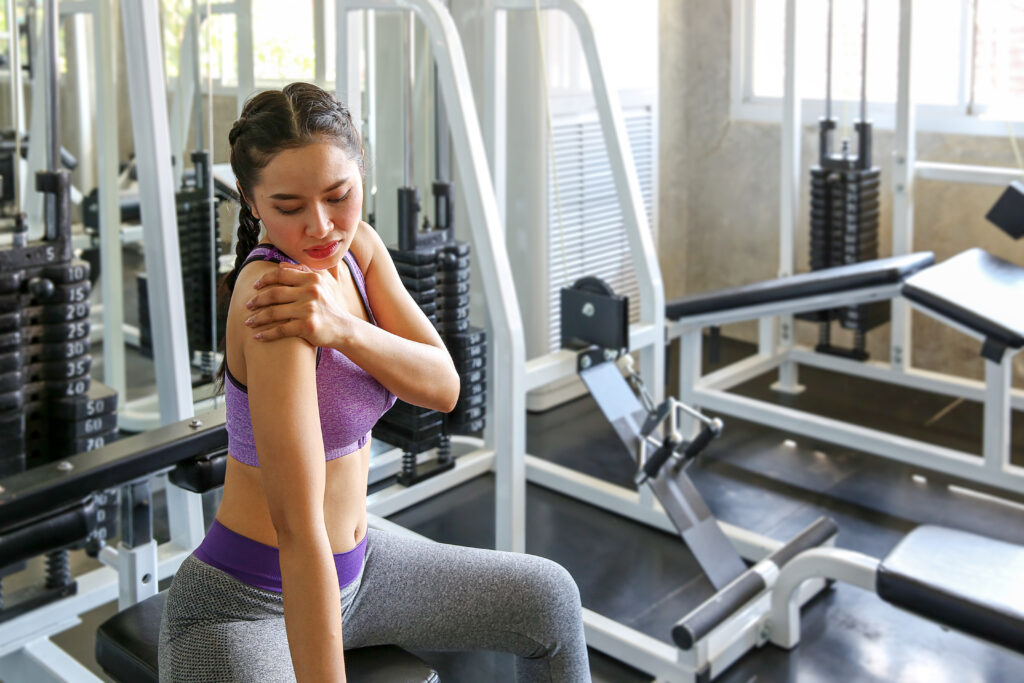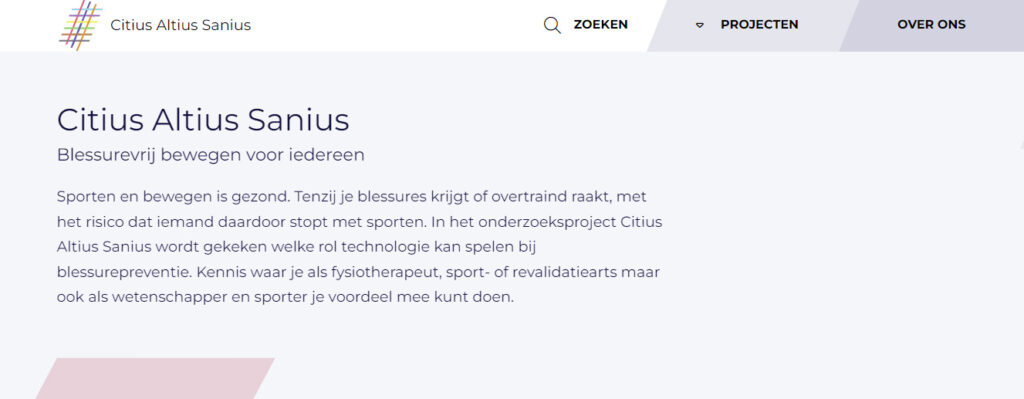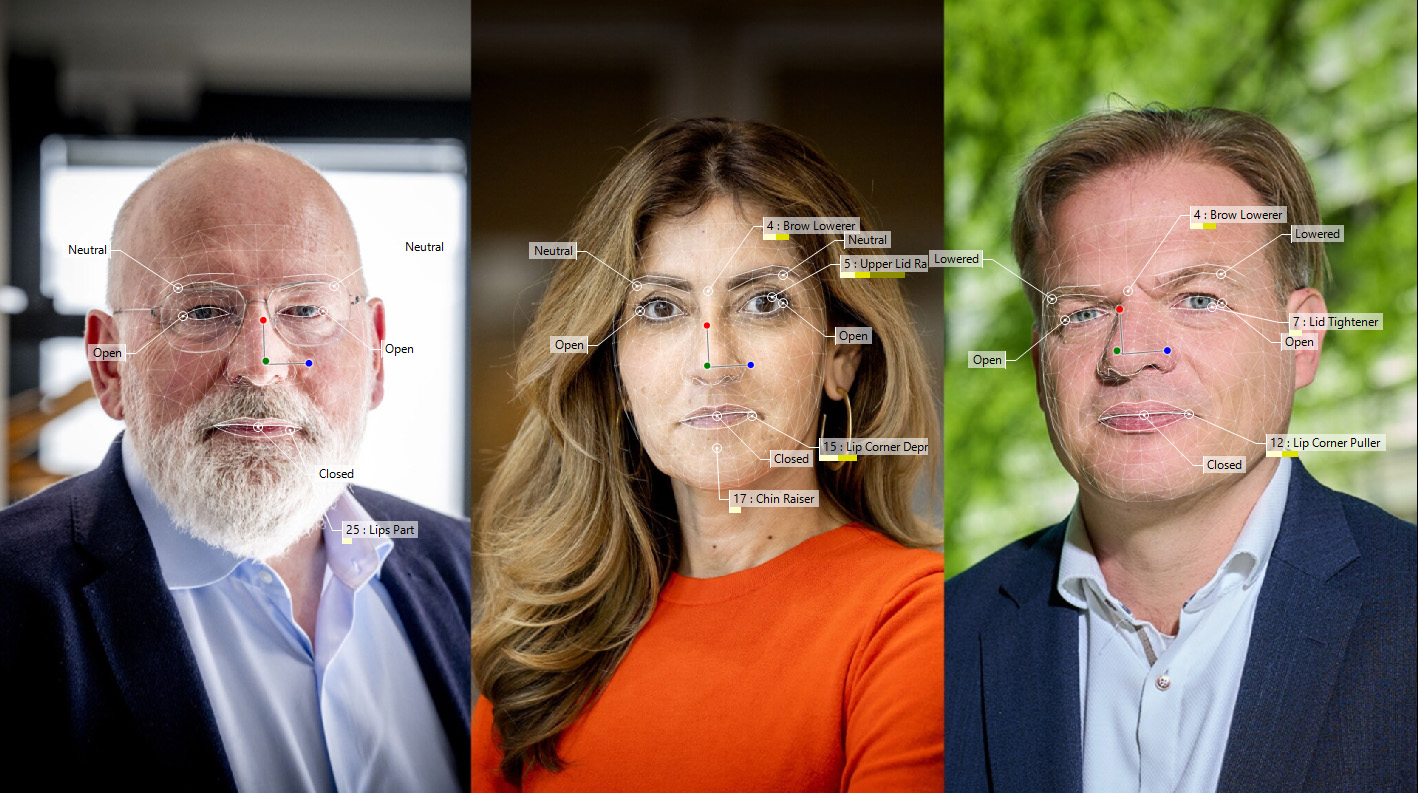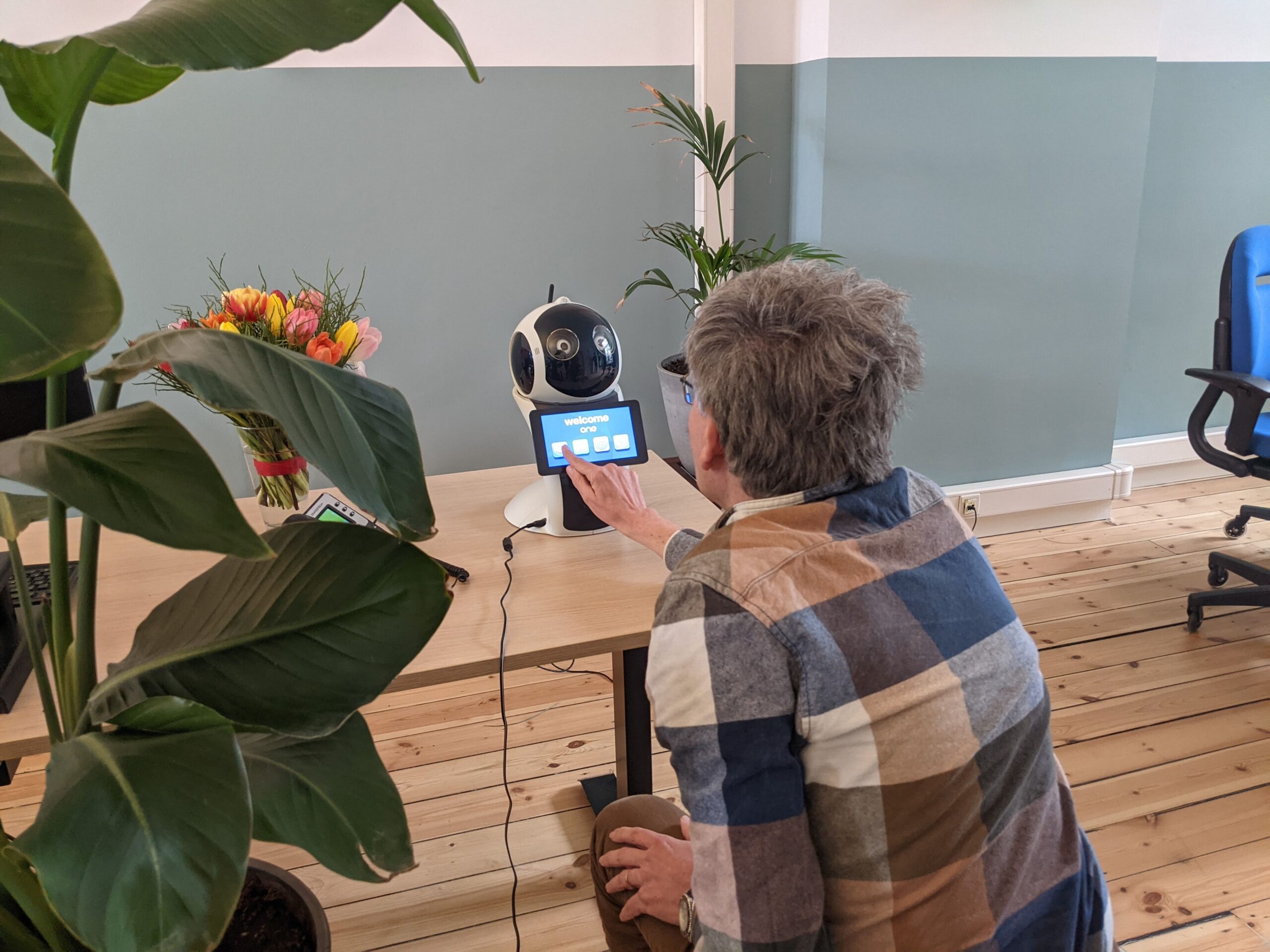New website for CAS research project on injury-free exercise

Prevention of sports injuries
Often when we think of injuries in sports, we think about injuries that happen openly and during big sport events such as the soccer player getting carried off the field holding their knee or road racing cyclists after a fall. We don’t necessarily think of injuries that happen in the gym, injuries that can happen to us. Injuries in fitness are less common than in other types of sport, however, they are the leading cause to stop working out. While good care and proper revalidation are essential for recovery after an injury, the best way to allow people to continue to work out is the prevention of injury in the first place.
Since 2019 VicarVision is involved in the Citius Altius Sanius or CAS project, which aims to prevent injuries in professional and recreational athletes. Alongside PhD students from the TU Delft and the Vrije Universiteit Amsterdam, we help to develop feedback systems for strength and fitness training to prevent injuries.
The camera as a low-cost sensor
o prevent injuries you must have enough information on which you can base a prediction. Luckily we all carry powerful sensors in our pockets, namely our smartphones. Although health benefits of them become more and more apparent through step-counters from gyroscopes and connected heart rate from connected smartwatches one sensor that has so far been underutilized is the camera.
Cameras can sometimes be a good choice of sensor, and can be applied during fitness exercises. Modern exercise machines often only allow for movements of specific muscle groups, while keeping the head relatively still. This allows cameras to be used as hassle-free, contactless sensors to help prevent injuries.
At VicarVision we have expertise in using cameras to their full potential, even to measure things that aren’t apparent to the naked eye. For example remotePPG, available in our recent release of FaceReader 9, allows estimating the heart rate and heart rate variability, through changes in the color of the skin. In combination with CAS P4 we developed an algorithm for heart rate detection that runs in real-time and beats most other baselines. We expanded the capabilities of our method to also measure breathing rate using minuscule movements of the chest and variations in the heart rate.
Our most recent results show that a single camera can be enough to estimate the joint angles between individual parts of the body. Although this might sound trivial, this is an important step to estimate forces on individual muscles and ligaments to predict how likely they are to get injured.
Putting it all together
Advanced feedback systems including our face analysis will help athletes in the future get the most out of their training with minimal risk of injury. The recently released new CAS website is a great way to keep up with the development of new technologies for injury prevention in strength and fitness training.
However, this is just a fraction of what the CAS project has to offer. Each of the 8 other subprojects investigates different types of sport, such as football, hockey or baseball or tries to combine technologies developed by other subprojects. Come check out what exciting progress has been made in sport injury prevention on their new website https://www.citiusaltiussanius.nl/.




